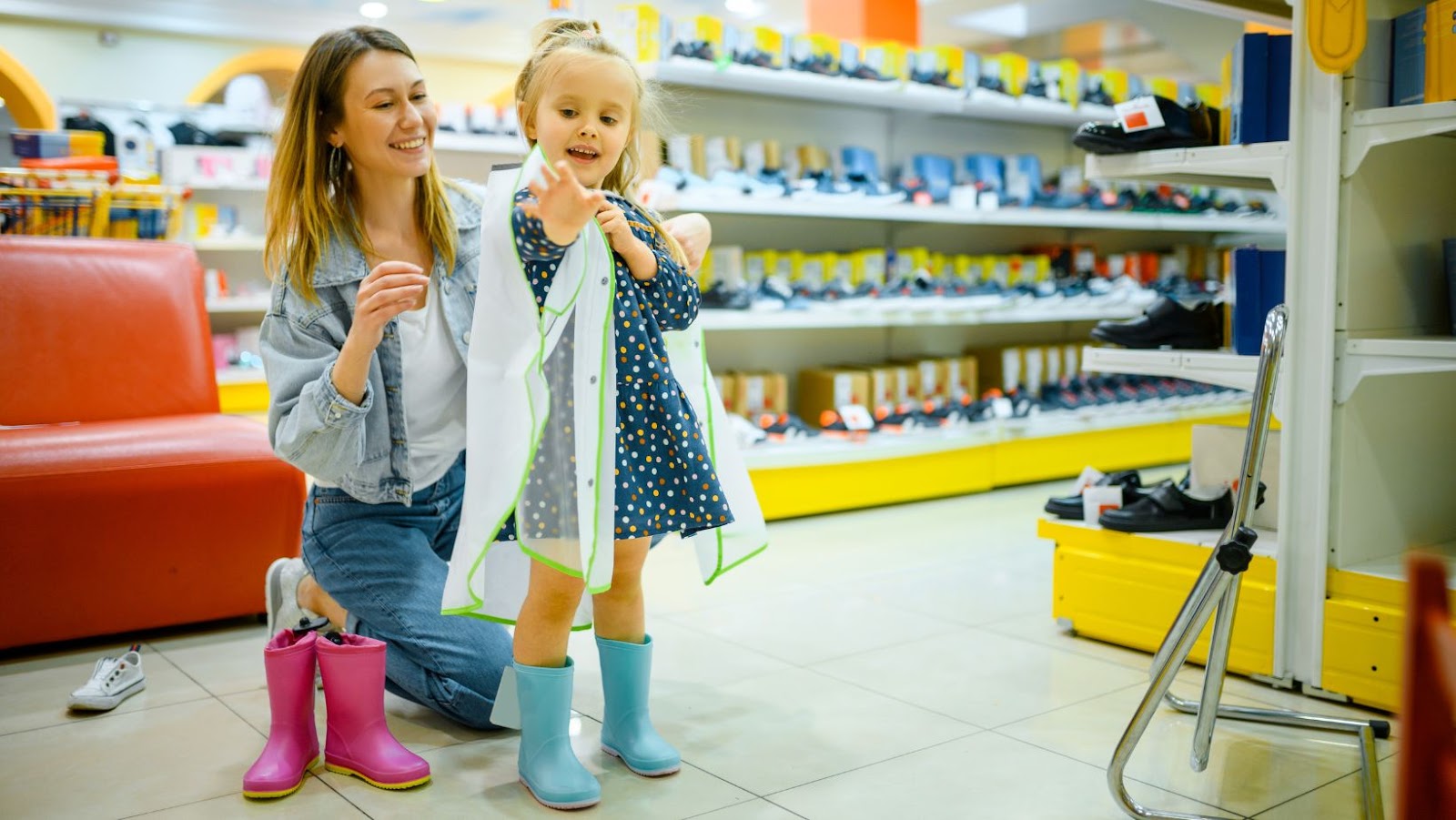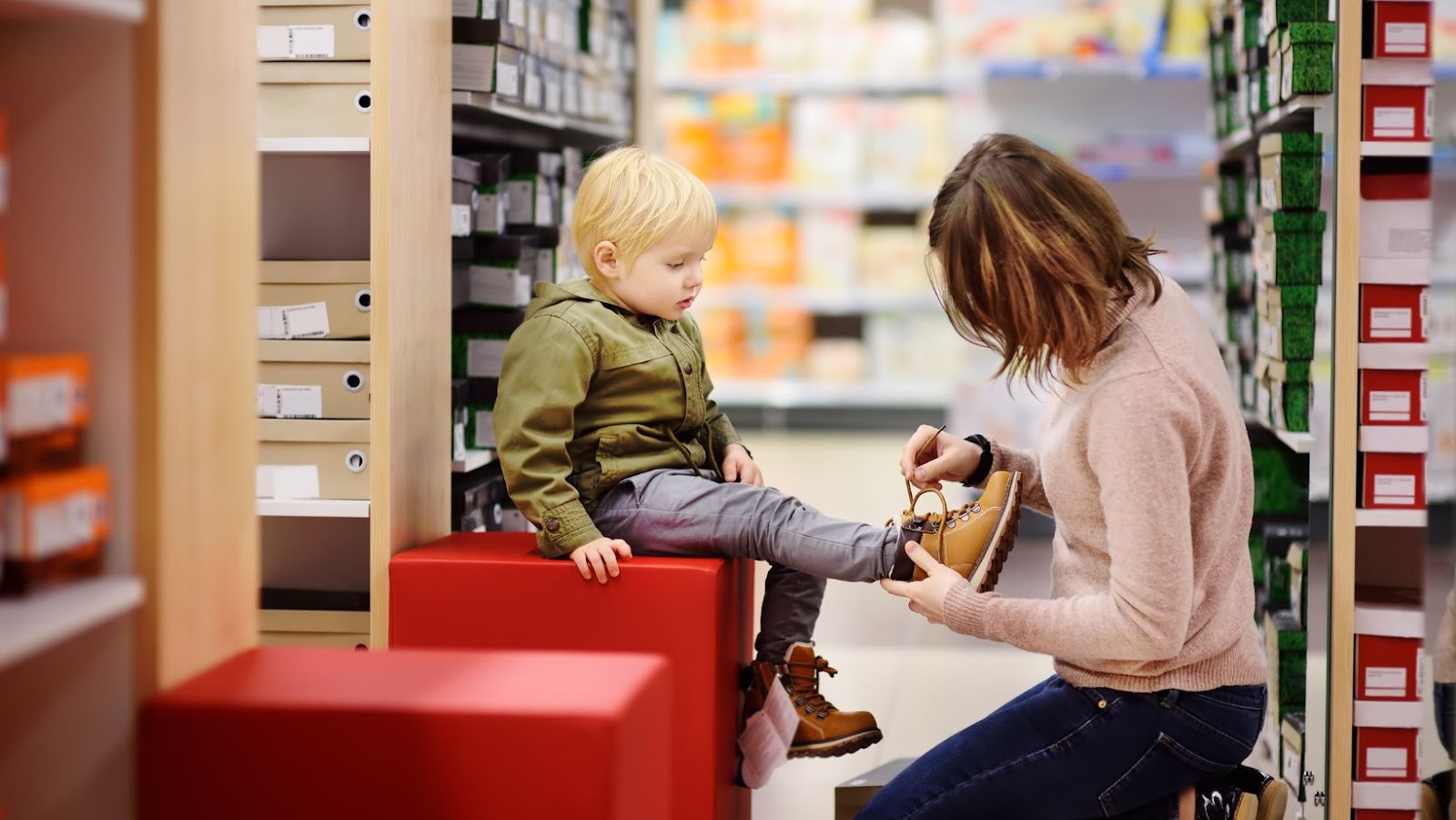Last Updated on September 28, 2022 by Deanne Robertson
Choosing your child’s footwear is more important than you may have thought at first. As a parent, your decision about your child’s footwear can affect their foot development and prevent future foot disorders.
Your child’s feet need support and comfort, and the appropriate shoes can give them both, which is crucial for developing coordination and balance.
But with so many options, it’s hard to tell which shoes are best for your kid. It’s difficult enough as it is when your kid can’t tell you what’s wrong with their shoes. Therefore, while selecting the best shoes for your children, you should pay attention to the following factors in addition to the style and price:
Material
Some kids’ footwear is more breathable than others; this is something to keep in mind when shopping for your little ones. The kid’s feet sweat a lot. If you want to keep your child’s feet healthy and free of infections, choosing shoes that are made of leather or canvas is best.
You should also take a look at the outer sole of the shoes. It serves as protection for the foot. Therefore, it has to be constructed from thick, flexible rubber to provide your youngster freedom of movement and adequate traction to prevent falls that might bring injury. And because they are bendy, your kid’s shoes will have a comfortable, familiar feel inside and out. It results in a more secure hold on the outer surface.

Select a reputable manufacturer wherever possible to ensure your children’s feet are supported by the best footwear. And fortunately, you won’t have to waste too much time searching around town for the right pair of children’s shoes because many options are available online.
For instance, you can find puma toddler shoes online in different designs and sizes to accommodate your child’s needs.
Fasteners
Fasteners are necessary for your kid’s shoes to provide a snug and comfortable fit. Choose slip-on shoes or those with rip tape if your child is too young to knot shoelaces. It’s essential to keep in mind that shoelaces can easily get undone. Your child might get hurt if they trip over one of them.
However, laces are preferable if they have foot problems since this will make it easier to insert orthotics.
Fit
As your kid gets older, their feet will change, too. And it might be stressful to know that they need a new pair of shoes soon since their feet are growing fast.
Depending on the child’s activity level and how quickly their feet develop, they may need new shoes every three to four months. For instance, a 16–24-month-old child will grow half a shoe size every three months.
When choosing a comfortable pair of shoes, it’s essential to consider the length of the foot and its width and depth. Ideally, the distance between the longest toe and the front of the shoe should be around the width of two fingers. The toes and toenails should be able to move freely inside the shoe, regardless of the depth.
Keeping these things in mind may reduce the likelihood of your kid developing painful conditions like ingrown toenails, blisters, and stubbed toes.
Additionally, remember that it’s not advisable to have children use hand-me-down footwear, even if doing so might save money. Even though the shoes are age-appropriate, they may not fit their feet well. Moreover, fungal infections like athlete’s foot and nail fungus can be spread through shoe sharing.
Purpose
Before buying your child a new pair of shoes, think about what they will be doing in them. For walking, for instance, a lightweight sneaker is the best option. It can lessen the impact of the heel on the surface due to increased cushioning.

Your child’s arches may benefit from this shoe’s rounded toe cap. It also promotes a natural weight shift when your youngster walks.
Running shoes are ideal for the active child who enjoys playing outside. Choose a pair with a lightweight, flexible design and a complex outsole for maximum grip. Select the model with added shock absorption to protect your child from heel soreness, tendonitis, or shin splints.
Conclusion
Despite the appeal of flashy styles, parents should remember that their children’s shoes have a significant role in the growth and development of their feet. Knowing which one is the right pair for your kid can prevent future foot disorders.
Therefore, while selecting a pair of shoes for your child, it is crucial to consider more than just the cost and style. You must also evaluate its purpose, material, and fit and choose what type of fastener it should have.




